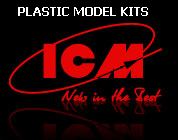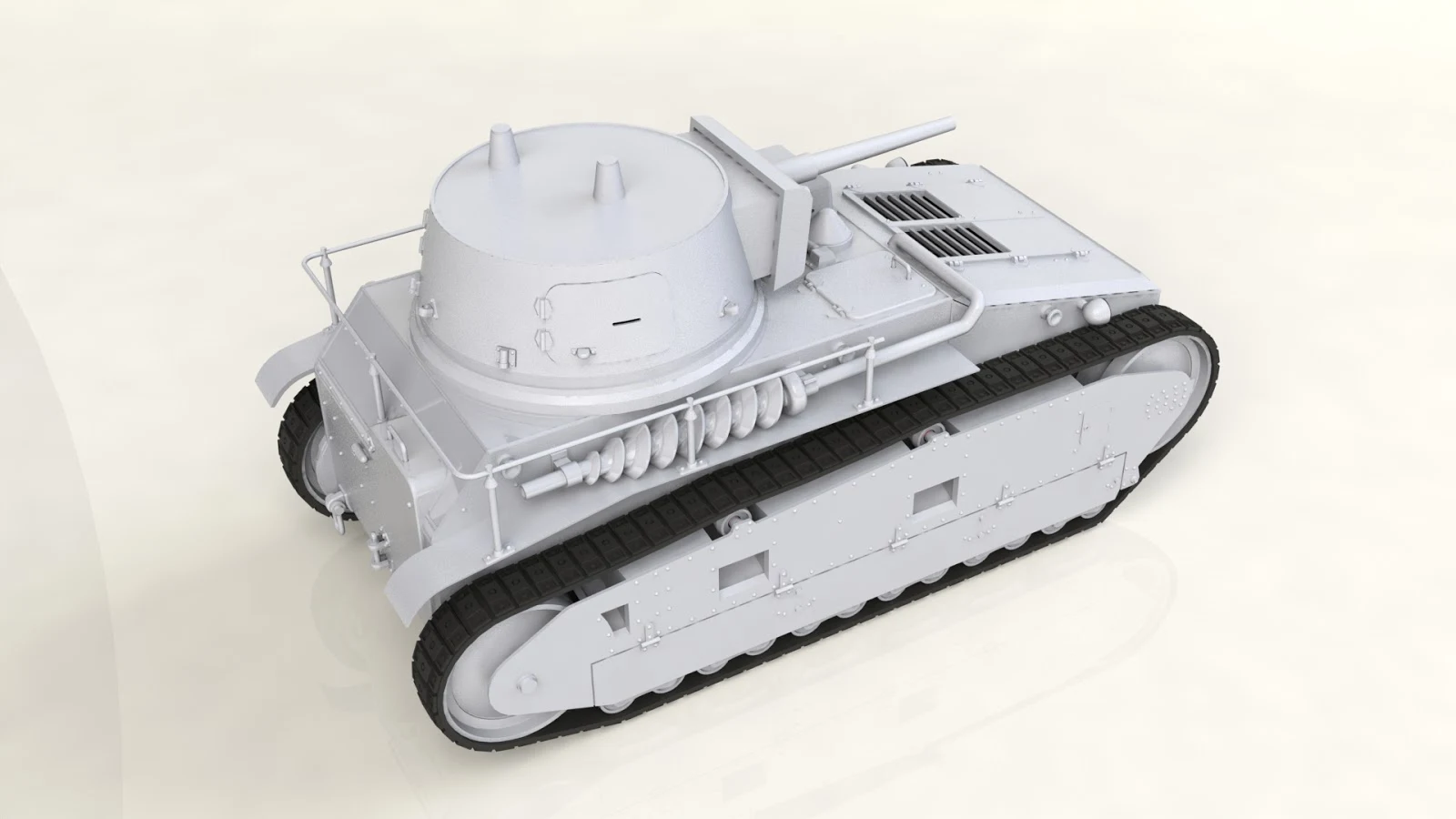Leichttraktor Rheinmetall 1930, German Tank is the latest tank to win fame mostly from "World of Tanks" - but this vehicle is all to real and it did exist in the flesh - now ICM have a all new mould kit coming in June...
Despite being forbidden by the Versailles Treaty from owning tanks, Germany initiated a clandestine tank program in 1925. In 1928, following other experimental designs, such as the Grosstraktor, a light tank design was ordered.
Two of Germany's largest armaments firms, Krupp and Rheinmetall-Borsig, were ordered to submit designs for a six-ton tank armed with a 37 mm gun. Krupp designed two prototypes with different suspensions.
Rheinmetall-Borsig designed two different vehicles based on the same chassis; a tank with a fully-enclosed, fully-traversable turret, and a self-propelled gun with a semi-enclosed a pedestal mount. Rheinmetall assembled all four prototypes in May 1930.
The Rheinmetall-designed Leichttraktor (L.Tr.Rhm) differs from Krupp's in that:
1) the fuel tanks were located in the track boxes;
2) the driver and radio man could sit beside the engine, allowing a better view and access to the engine;
3) the hull bottom was reinforced with ribs;
4) the use of a heavy-duty model 4-speed Soden transmission, assembled with the transfer case (with two short shift levers on top of the lid);
5) final drives for the track-drive wheels were located outside the hull; and
6) large brake drums for brake bands were mounted on the inside of the hull side.
Additionally, there was a hatch in the hull rear-wall, a hatch above the radio operator, and a hinged rectangular vision cupola (Sehkuppel) above the driver. Kinonglas-blocks were mounted behind vision slits on three sides of the Sehkuppel. The width of these vision slits could be adjusted from 3 to 20 mm wide by sliding the adjustable plates. The weight of the Sehkuppel was counterbalanced by the coil spring.
New kit in process from ICM
Leichttraktor Rheinmetall 1930, German Tank
Scale: 1:35
MODEL KIT No #35330
100% new moulds
Leichttraktor Rheinmetall 1930, German Tank (100% new moulds)Despite being forbidden by the Versailles Treaty from owning tanks, Germany initiated a clandestine tank program in 1925. In 1928, following other experimental designs, such as the Grosstraktor, a light tank design was ordered.
Two of Germany's largest armaments firms, Krupp and Rheinmetall-Borsig, were ordered to submit designs for a six-ton tank armed with a 37 mm gun. Krupp designed two prototypes with different suspensions.
The Krupp Version of the tank below - the easiest way to differentiate this tank is the suspension and turret
Rheinmetall-Borsig designed two different vehicles based on the same chassis; a tank with a fully-enclosed, fully-traversable turret, and a self-propelled gun with a semi-enclosed a pedestal mount. Rheinmetall assembled all four prototypes in May 1930.
The Rheinmetall-designed Leichttraktor (L.Tr.Rhm) differs from Krupp's in that:
1) the fuel tanks were located in the track boxes;
2) the driver and radio man could sit beside the engine, allowing a better view and access to the engine;
3) the hull bottom was reinforced with ribs;
4) the use of a heavy-duty model 4-speed Soden transmission, assembled with the transfer case (with two short shift levers on top of the lid);
5) final drives for the track-drive wheels were located outside the hull; and
6) large brake drums for brake bands were mounted on the inside of the hull side.
Additionally, there was a hatch in the hull rear-wall, a hatch above the radio operator, and a hinged rectangular vision cupola (Sehkuppel) above the driver. Kinonglas-blocks were mounted behind vision slits on three sides of the Sehkuppel. The width of these vision slits could be adjusted from 3 to 20 mm wide by sliding the adjustable plates. The weight of the Sehkuppel was counterbalanced by the coil spring.
Technical Details
Makers: Krupp / Rheinmetall-Borsig
Crew: 3
Physical Characteristics
Weight 7.9 t 8 t
Length 4.18 m 4.21 m
Height 2.13 m 3 m
Armament
Primary weapon 37 mm tank gun (L/45)
Secondary weapon- 7.92 mm machine gun
While none of the designs ever saw action, they provided valuable lessons for the German tank designers, which later influenced such designs as the Pz Kpfw I. In addition, like the Grosstraktor, the prototypes were shipped to Kama, Russia in June 1930. Here, they took part in the secret Russo-German armoured warfare trials.
This all-new kit from ICM:
This new model from ICM is based on the Rheinmetall-Borsig version of this popular little tank that has gained so much more exposure though the "World of Tanks" video came (Seal-clubbers you know what we are talking about).
The kit is all injection moulded plastic, but whether there is any photo-etch , track types and any other details are still shrouded in the haze as of yet. We will try to get one to build for you here on the news ASAP
Until then take a look at these CAD's to give you a little more idea of the kit..
This new kit will be available at the end of May or early June from ICM's distributors














